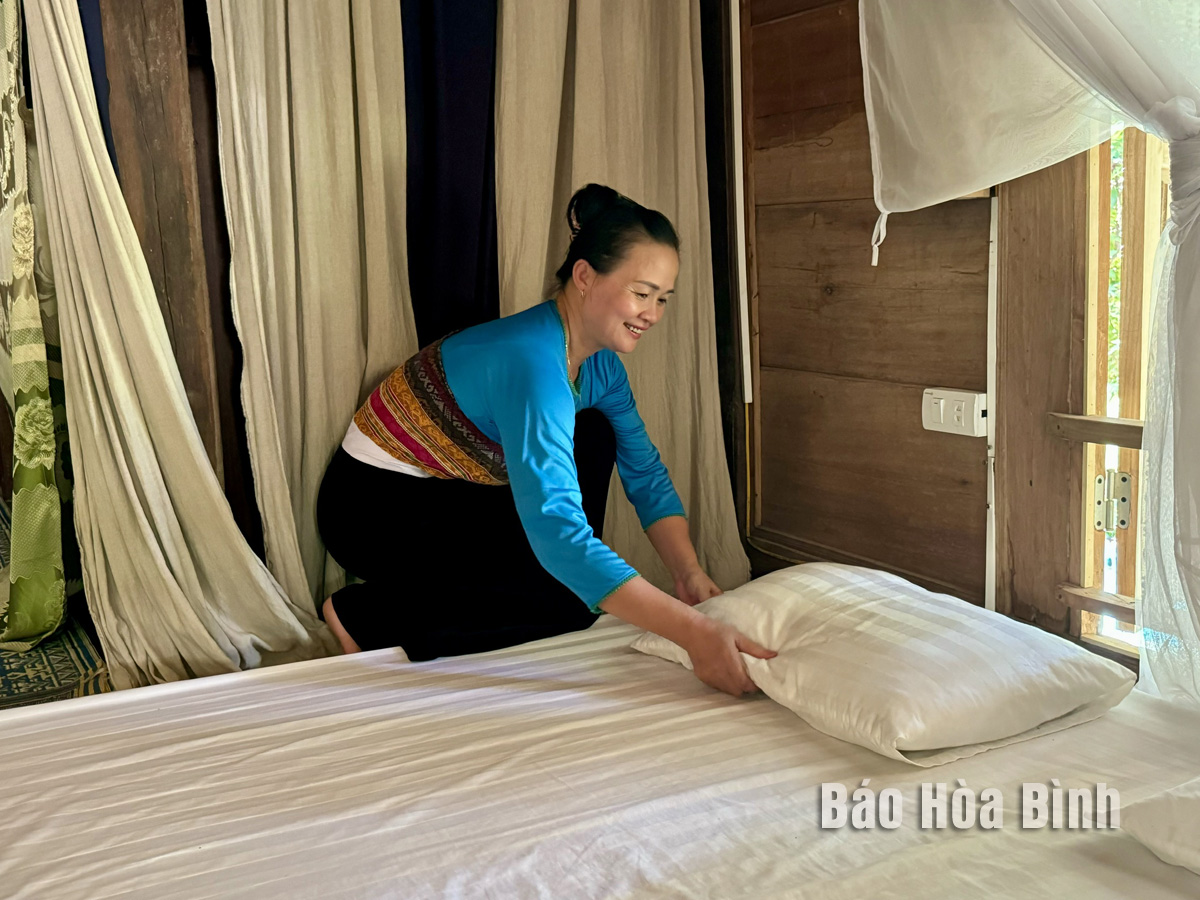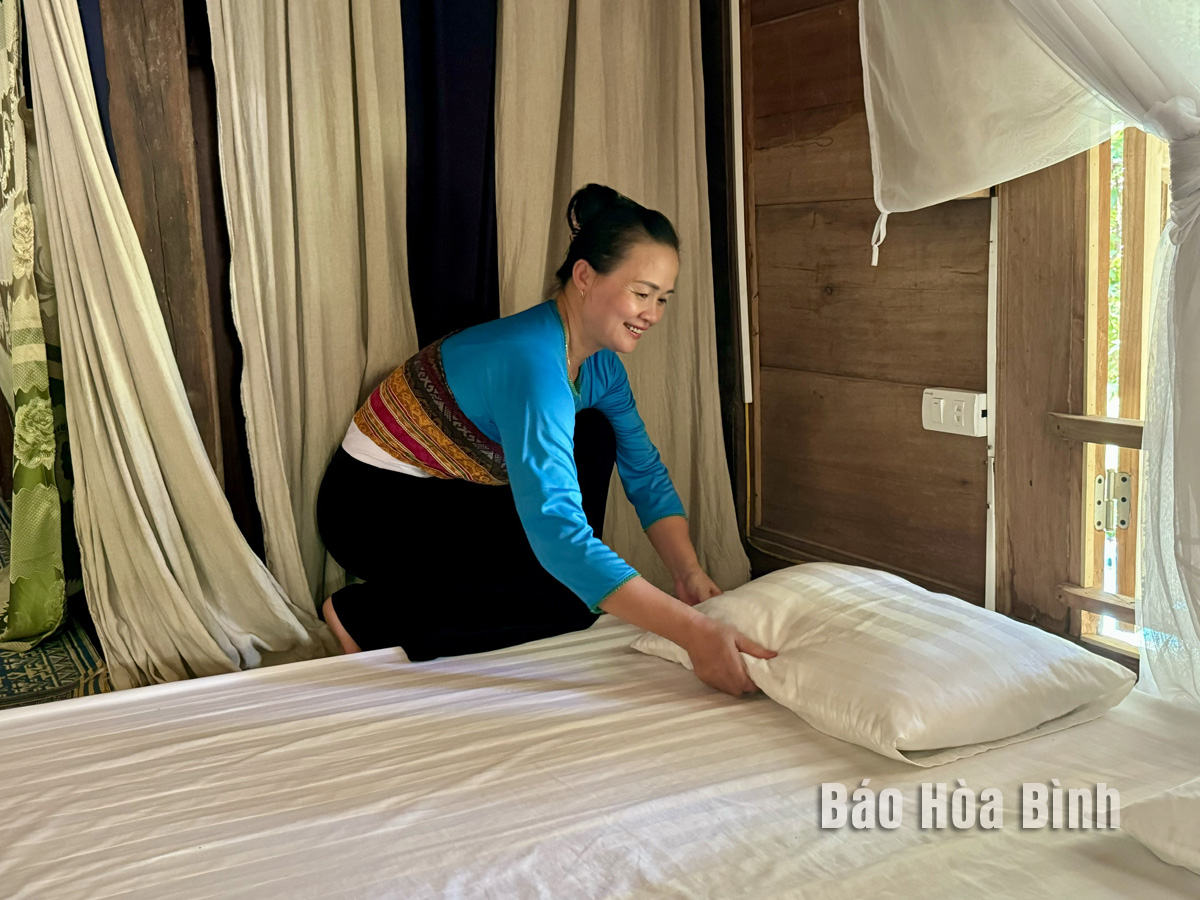
Blessed with a stunning natural landscape, fresh air, and a unique cultural identity, Mai Chau district, where the Thai people make up over 60% of its population, has located itself on the Vietnamese tourism map with community tourism.
The Thai ethnic
group in Mai Hich commune, Mai Chau district, optimise their unique culture in
community tourism.
Over-700-year-old Lac hamlet in Chieng Chau
commune began to provide tourism services in the 1960s, welcoming the first
international diplomatic delegations.
Today, traditional customs are still preserved
by local residents, which, together with the natural landscape, has helped the
hamlet attract crowds of tourists and make its name in the bucket list of many
foreign visitors.
Apart from Lac, other Thai hamlets like Pom
Coong in Mai Chau town, and Nhot in Na Phon commune are also well-known
community tourism destinations thanks to their unique cultural traits, simple
yet rustic architectural styles, and natural landscapes.
Apart from community tourism, some homestay
service providers have also built resorts to cater to the diverse demands of
tourists.
Over the past three years, Mai Chau has
maintained the market fair model on every Sunday in its centre, helping promote
community tourism there.
Ngan Van Tuan, head of the district Bureau of
Culture and Information, said Mai Chau has seen tourism as a spearhead economic
sector driven by community and resort tourism.
With eight community tourism sites, including
six run by the Thai people, the district welcomed over 600,000 holidaymakers in
the first eight months of this year, of them 20% foreign.
Community tourism not only contributes to
economic restructuring, job creation, raising income, and improving living
standards, but also plays a role in cultural preservation, the official said.
A diverse chain of eco-tourism and resort destinations concentrated in Hoa Binh city and the districts of Tan Lac, Da Bac, and Luong Son… Along with the launch of several key high-quality resort tourism projects, these developments have reshaped the landscape and enhanced the appeal of Hoa Binh as a travel destination.
Boasting diverse terrain, a mild climate, and rich natural resources, Cao Phong district is increasingly asserting its place on Vietnam’s tourism map, attracting both domestic and foreign visitors. The district is renowned for its stunning landscapes, majestic mountains, a crystal-clear hydropower lake, and the unique cultural identity of local ethnic groups.
With its pristine landscapes, unique cultural heritage of Muong ethnic minority, and an expanding range of visitor experiences, Tan Lac district of Hoa Binh has fast become a captivating destination for both domestic and international tourists.
Until now, Sung village in Cao Son commune, Da Bac district remains the only Dao ethnic community in Hoa Binh province to develop a community-based tourism model. Beyond its untouched natural landscapes, cultural identity serves as the cornerstone attraction for visitors.
Alongside the diverse cultural identities of the Kinh, Muong, Tay, Thai, Dao, and Mong ethnic people, Hoa Binh province is also renowned as the "capital" of the northwestern Vietnamese cuisine, offering unique and distinctive dishes. At festivals, during Lunar New Year (Tet), or on significant family or community occasions, special dishes are prepared, leaving a lasting impression on visitors.
A Phong Linh (Yellow Tabebuia) flower garden in Thang village, Thach Yen commune, Cao Phong district is currently in full bloom, drawing a large number of visitors.



